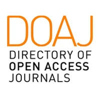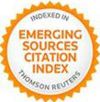Digital perspectives to bring dissonant heritageback to life. The military landscape of the Gallia Placidia line. 
Abstract
This paper focuses on enabling strategies to enhance the military landscape of the Galla Placidia Line by stressing all opportunities offered by digital technologies in the field of cultural heritage. The proposed solutions have been implemented as part of an ongoing project funded by the Emilia-Romagna region and Ravenna municipality, which supports a conscious digital transition of cultural sectors as a new way of understanding, enjoining and preserving historic architectures and sites. Assumptions and aims of the research also face the pressure the entire planet is experiencing due to Covid-19 pandemic. First, this study describes the fortified system of German bunkers erected along the Adriatic coast during World War II, highlighting its limits and potential and framing the research background; then, it presents the tested digital tools pointing out their positive effects on processes of knowledge, conservation and enhancement of such a dissonant heritage.
Keywords
Full Text:
PDFDOI: http://dx.doi.org/10.2423/i22394303v11n1p63
References
Banca d’Italia (2018). Turismo in Italia. Numeri e potenziale di sviluppo. Presentazione dei risultati di un progetto di ricerca della Banca d’Italia. Seminari e Convegni / Workshops and conferences, 23. Retrieved from: https://www.bancaditalia.it/pubblicazioni/collana-seminari-convegni/2018-0023/rapporto-turismo_finale_convegno.pdf
Boglione, M. (2012). L’Italia murata. Bunker, linee fortificate e sistemi difensivi dagli anni Trenta al secondo dopoguerra. Torino, Italy: Blu edizioni.
Caruana, S. (2015). An ICT-Based Competence Framework to Facilitate Intercultural Competence Continuous Professional Development. In V. Katsoni (Ed.), Cultural Tourism in a Digital Era. Springer Proceedings in Business and Economics. Cham, Switzerland: Springer. https://doi.org/10.1007/978-3-319-15859-4_22
Clini, P., Galli, A., & Quattrini, R. (2016). Landscape & Archaeology. SCIRES-IT – SCIentific RESearch and Information Technology, 6(2), 1-6. http://dx.doi.org/10.2423/i22394303v6n2p1
Conferenza delle Regioni e delle Province Autonome (2020). Turismo: rapporto dell’Istat su viaggi e vacanze degli italiani. Retrieved from: http://www.regioni.it/newsletter/n-3774/del-10-02-2020/turismo-rapporto-dellistat-su-viaggi-e-vacanze-degli-italiani-20780/
Council of Europe (2005). Council of Europe framework convention on the value of cultural heritage for society. Retrieved from https://rm.coe.int/1680083746
Della Torre, S. (2021). Italian perspective on the planned preventive conservation of architectural heritage. Frontiers of Architectural Research, 10(1), 108-116. https://doi.org/10.1016/j.foar.2020.07.008
Demoskopika (2020). Regional tourism Reputation Index. Il primo rating italiano sul turismo. Retrieved from: https://demoskopika.it/ricerche/regional-tourism-reputation-index-2020/
Europeana (2020). Strategy 2020-25: Empowering Digital Change. Luxembourg: Publications Office of the European Union. Retrieved from https://pro.europeana.eu/files/Europeana_Professional/ Publications/EU2020StrategyDigital_May2020.pdf
European Commission (2010a). A Digital Agenda for Europe. Retrieved from https://eur-lex.europa.eu/legal-content/EN/TXT/PDF/?uri=CELEX:52010DC0245R(01)&from=EN
European Commission (2010b). Communication from the Commission to the European Parliament, the Council, the European Economic and Social Committee and the Committee of the Regions - Europe, the world's No 1 tourist destination – a new political framework for tourism in Europe. Retrieved from: https://eur-lex.europa.eu/legal-content/EN/TXT/?uri=CELEX:52010DC0352
European Commission (2018). A New European Agenda for Culture. Retrieved from https://ec.europa.eu/culture/sites/default/files/2020-08/swd-2018-167-new-european-agenda-for-culture_en.pdf
European Commission (2019a). Report from the commission to the european parliament, the council, the european economic and social committee and the committee of the regions on the implementation, results and overall assessment of the European Year of Cultural Heritage 2018. Retrieved from https://eur-lex.europa.eu/legal-content/EN/TXT/PDF/?uri=CELEX:52019DC0548&from=EN
European Commission (2019b). EU Member States sign up to cooperate on digitising cultural heritage. Retrieved from https://ec.europa.eu/digital-single-market/en/news/eu-member-states-sign-cooperate-digitising-cultural-heritage
European Commission (2019c). Strategic framework for the EU's cultural policy. Retrieved from https://ec.europa.eu/culture/policies/strategic-framework-eus-cultural-policy
European Council (2019). Declaration of Cooperation on advancing digitisation of cultural heritage. Retrieved from https://ec.europa.eu/digital-single-market/en/news/eu-member-states-sign-cooperate-digitising-cultural-heritage
European Heritage Alliance (2020). Cultural Heritage: a powerful catalyst for the future of Europe. Retrieved from https://pro.europeana.eu/post/europe-day-manifesto-cultural-heritage-a-powerful-catalyst-for-the-future-of-europe
Fernandes Vaz, R.I., Fernandes, P.O., & Rocha Veiga, A.C., (2018). Interactive Technologies in Museum: How Digital Installations and Media are enhancing the Visitors’ Experience. In J.M.F. Rodrigues, C.M.Q. Ramos, P.J.S. Cardoso, & C. Henrique (Eds.), Handbook of Research on Technological Developments for Cultural Heritage and eTourism Application (pp. 30-53). Hershey, PA, USA: IGI Global.
Grieves, M. (2015). Digital Twin: Manufacturing Excellence through Virtual Factory Replication. White Paper. Vélizy-Villacoublay, France: Dassault Systèmes.
Hobsbwam, E.J. (1995). The age of extremes. The short twentieth century 1914-1991. London, England: Abacus.
International Council on Monuments and Sites - ICOMOS (2013). The Burra Charter. The Australia ICOMOS Charter for Places of Cultural Significance. Retrieved from https://openarchive.icomos.org/id/eprint/2145/2/The-Burra-Charter-2013-Adopted-31.10.2013.pdf
International Council on Monuments and Sites - ICOMOS (2020). Shared Cultures, Shared Heritage, Shared Responsibility. International Day for Monuments and Sites. Retrieved from https://www.icomos.org/en/77-articles-en-francais/72051-18-april-2019-theme-shared-cultures
Jouan, P., & Hallot, P. (2020). Digital twin: Research framework to support preventive conservation policies. ISPRS International Journal of Geo-Information, 9(4), 228, 1-25. https://doi.org/10.3390/ijgi9040228
Kauffmann, J.E., & Kaufmann, H.W. (2003). Fortress Third Reich. German fortifications and defense systems in Word War II. Cambridge, England: Capo Press.
La Linea Galla Placidia (2020). Retrieved from: https://lalineagallaplacidia
Leeuwarden Declaration on “Adaptive re-use of the built heritage: Preserving and enhancing the values of our built heritage for future generations”. (2018). Retrieved from https://www.ace-cae.eu/uploads/tx_jidocumentsview/LEEUWARDEN_STATEMENT_FINAL_EN-NEW.pdf
Letellier, R., Schmid, W., & LeBlanc, F. (2007). Recording, Documentation, and Information Management for the Conservation of Heritage Places: Guiding Principles. Los Angeles, CA: Getty Conservation Institute. Retrieved from: http://hdl.handle.net/10020/gci_pubs/recordim
Mariotti, C., Ugolini, A., & Zampini, A. (2018). I bunker tedeschi a difesa della Linea Galla Placidia. Conservare un patrimonio dimenticato. Archistor, 9, 148-193. https://doi.org/10.14633/AHR067
Montemaggi, A. (2008). Clausewitz sulla linea gotica: come la superiore tattica tedesca riuscì a bloccare l’attacco dei soverchianti eserciti alleati. Rimini, Italy: Angelini.
Osservatorio sul turismo dell’Emilia-Romagna (2019). Il turismo in Emilia-Romagna, gennaio-dicembre 2019. Stime e proiezioni del movimento turistico nei diversi comparti dell’offerta regionale. Retrieved from: https://www.ucer.camcom.it/osservatori-regionali/os-turistico/pdf19/2019-rapporto-turismo-er-gen-dic.pdf
Petraroia, P. (2020). Introduzione. Il capitale culturale. Studies on the Value of Cultural Heritage, Supplemento 11 “Per una migliore normalità e una rinnovata prossimità. Patrimonio, attività e servizi culturali per lo sviluppo di comunità e territori attraverso la pandemia”, 9-13.
Proli, S., & Tartari, F. (2020). The potential of neglected places. IN LOCO: the widespread museum of abandonment. SCIRES-IT – SCIentific RESearch and Information Technology, 10(2), 159-172. http://dx.doi.org/10.2423/i22394303v10n2p159
Regione Emilia-Romagna (2020), Rapporto annuale sul movimento turistico e la consistenza ricettiva alberghiera e complementare in Emilia-Romagna, Retrieved from: https://statistica.regione.emilia-romagna.it/allegati/2020/rapporto-annuale-turismo-emilia-romagna-2019.pdf/@@download/file/Rapporto-annuale-turismo-Emilia-Romagna-2019.pdf
Ruggeri Tricoli, M.C. (2009). Trauma. Memoriali e musei tra tragedia e controversia. Sant’Arcangelo di Romagna, Italy: Maggioli Editore.
Smith, L. (2006). Uses of Heritage. London, England: Routledge.
Sonkoly, G., & Vahtikari T. (2018). Innovation in cultural heritage research. For an integrated European research policy. Luxembourg: Publications Office of the European Union. Retrieved from https://op.europa.eu/en/publication-detail/-/publication/1dd62bd1-2216-11e8-ac73-01aa75ed71a1
Tunbridge, J.E., & Ashworth, G.J. (1995). Dissonant heritage: the management of the past as a resource in conflict. Chichester, New York: John Wiley.
Ugolini, A. (2019). Projects and interventions on cultural heritage: management sharing with the community. In D. Pittaluga, & F. Fratini (Eds.), Conservation and promotion of architectural and landascape heritage of the mediterranean coastal sites (pp. 2031-2042). Milano, Italy: Franco Angeli.
Ugolini, A., & Delizia, F. (2021). Fragile memories. A brief historical overview of Italian conservation laws on fascist concentration camps. In R. Mira, & M. Cassani Simonetti (Eds.), Camps of Transit, Sites of Memory. Oxfort, England: Peter Lang. In press.
Ugolini, A., & Faccio, P. (2021). The Remains and the Landscape: strategies for active conservation of the former Campo di Fossoli. In M. Cassani Simonetti, R. Mira, & D. Salerno (Eds.), The heritage of a transit camp. Fossoli: history, memory, aesthetics. Oxfort, England: Peter Lang. In press.
Virilio, P. (1975). Bunker archéologie. Paris, France: Centre de creation industrielle.
Volpe, G. (2016). Un patrimonio italiano. Beni culturali, paesaggio e cittadini. Novara, Italy: Utet.
World Bank (2017). Twenty reasons Sustainable Tourism Counts for Developments. Washington DC, USA: World Bank.
World Travel & Tourism Council – WTTC (2020). Travel & Tourism: Economic Impact Report 2019 – Italy, Retrieved from: https://wttc.org/Research/Economic-Impact
Article Metrics
Metrics powered by PLOS ALM
Refbacks
- There are currently no refbacks.
Copyright (c) 2021 Chiara Mariotti, Andrea Ugolini, Alessia Zampini

This work is licensed under a Creative Commons Attribution-NonCommercial-NoDerivatives 4.0 International License.
SCIRES-IT, e-ISSN 2239-4303
Journal founded by Virginia Valzano





